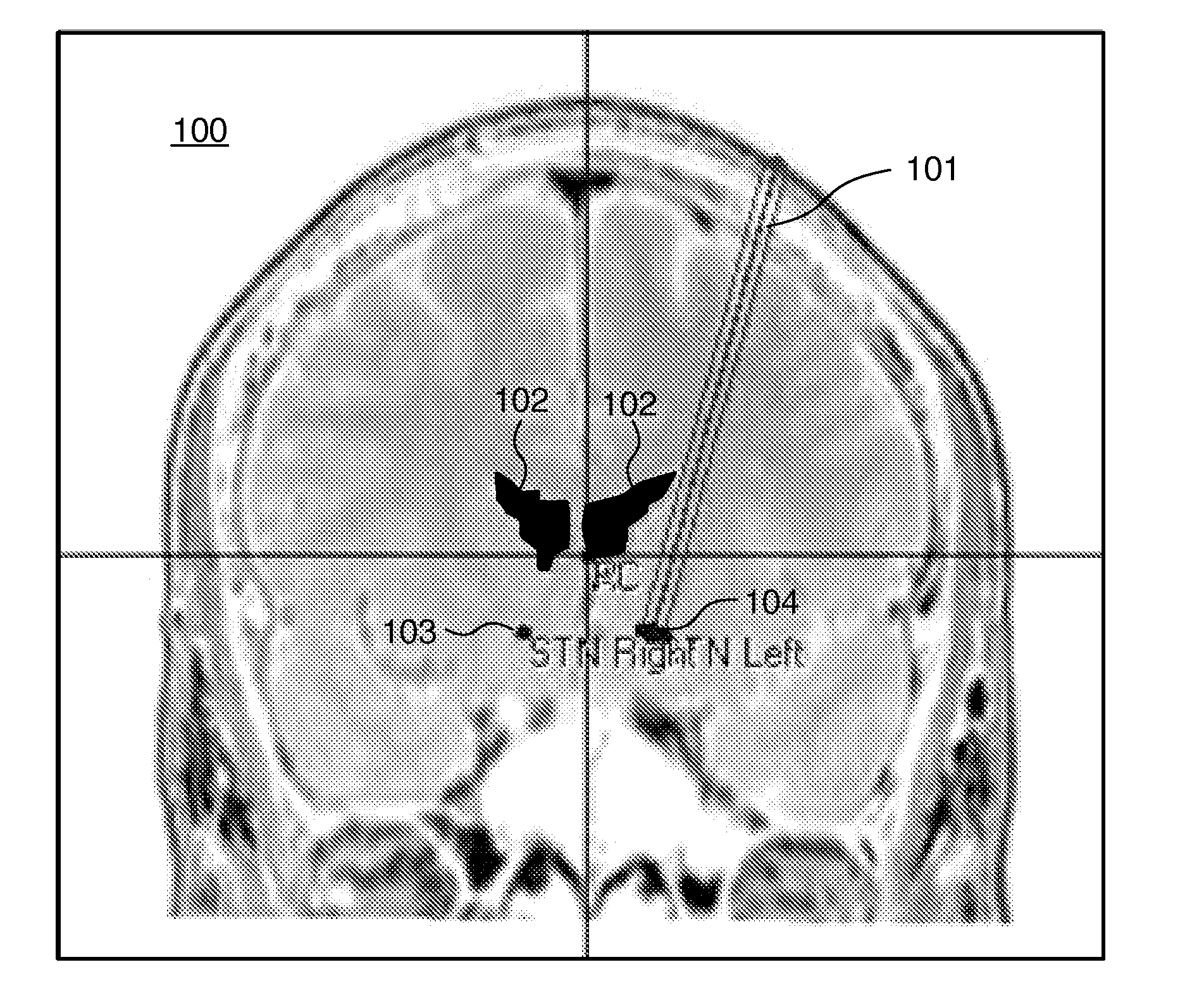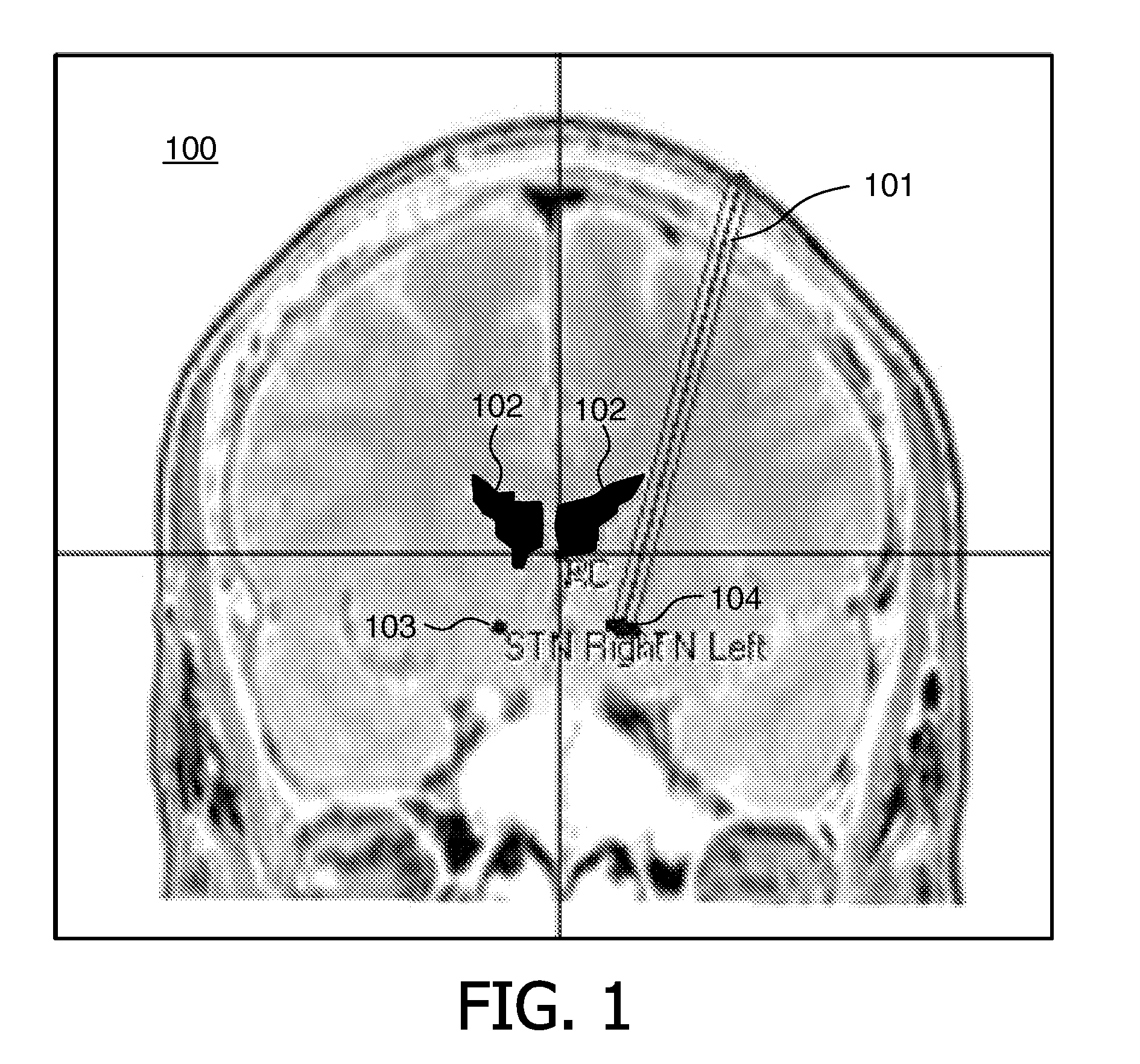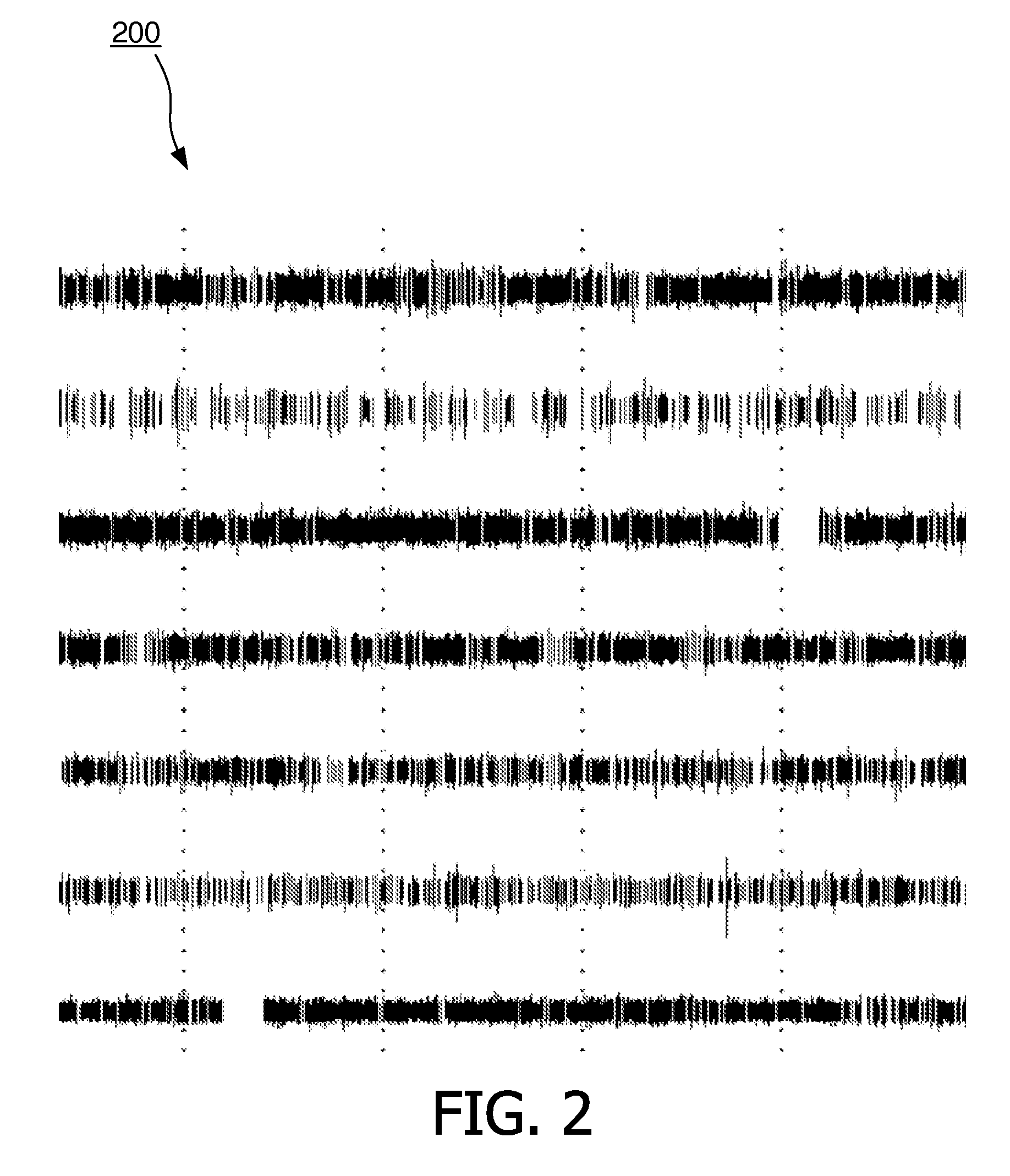Visualizing surgical trajectories
a surgical trajectory and trajectory technology, applied in the field of visualizing surgical trajectory, can solve the problems of limited accuracy of pre-operative mr image registration, difficulty or even impossible to visually distinguish small differences in neurological characteristics, and inability to accurately predict the accuracy of pre-operative mr images
- Summary
- Abstract
- Description
- Claims
- Application Information
AI Technical Summary
Benefits of technology
Problems solved by technology
Method used
Image
Examples
Embodiment Construction
[0025]In the following, the invention will be described by an exemplary embodiment related to neurosurgery using electrophysiological probes. The invention is however not limited to use with a neuro-EP system. Other surgical interventions where knowledge about anatomic information along a surgical trajectory (planned and / or navigated) is useful for clinical and / or diagnostic purposes may benefit as well from this invention. The invention may, e.g., be suitable for optical-needle guided interventions.
[0026]FIG. 1 shows an image 100 comprising data from an MRI, an atlas and three surgical trajectories 101. It is known to use such an image 100 for pre-operative planning of a surgical trajectory In this image atlas information is used for indicating specific structures 102, 103, 104 in the region of the brain which is shown in the MRI image. The image 100 shows an MRI image of a cross section of a human brain. The surgical trajectory 101 runs through the brain tissue towards the target ...
PUM
 Login to View More
Login to View More Abstract
Description
Claims
Application Information
 Login to View More
Login to View More - R&D
- Intellectual Property
- Life Sciences
- Materials
- Tech Scout
- Unparalleled Data Quality
- Higher Quality Content
- 60% Fewer Hallucinations
Browse by: Latest US Patents, China's latest patents, Technical Efficacy Thesaurus, Application Domain, Technology Topic, Popular Technical Reports.
© 2025 PatSnap. All rights reserved.Legal|Privacy policy|Modern Slavery Act Transparency Statement|Sitemap|About US| Contact US: help@patsnap.com



